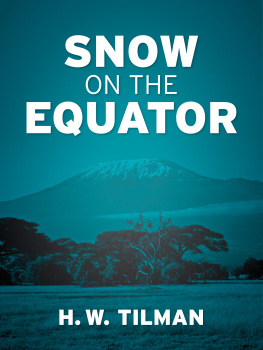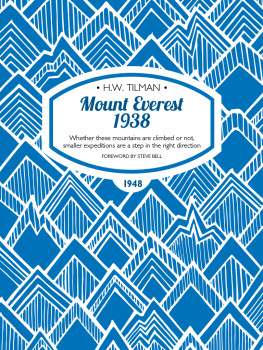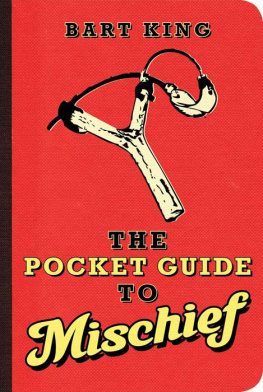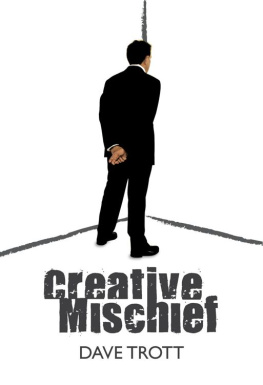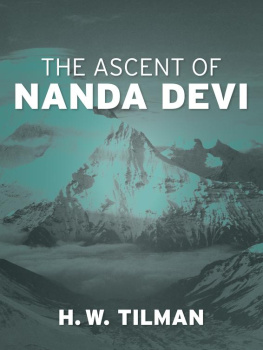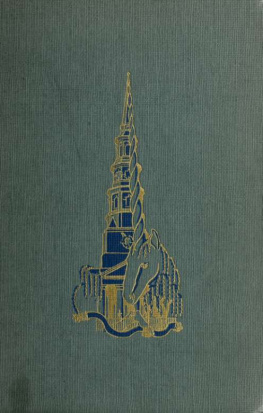H.W. Tilman - Mostly Mischief
Here you can read online H.W. Tilman - Mostly Mischief full text of the book (entire story) in english for free. Download pdf and epub, get meaning, cover and reviews about this ebook. genre: Non-fiction. Description of the work, (preface) as well as reviews are available. Best literature library LitArk.com created for fans of good reading and offers a wide selection of genres:
Romance novel
Science fiction
Adventure
Detective
Science
History
Home and family
Prose
Art
Politics
Computer
Non-fiction
Religion
Business
Children
Humor
Choose a favorite category and find really read worthwhile books. Enjoy immersion in the world of imagination, feel the emotions of the characters or learn something new for yourself, make an fascinating discovery.
- Book:Mostly Mischief
- Author:
- Genre:
- Rating:5 / 5
- Favourites:Add to favourites
- Your mark:
- 100
- 1
- 2
- 3
- 4
- 5
Mostly Mischief: summary, description and annotation
We offer to read an annotation, description, summary or preface (depends on what the author of the book "Mostly Mischief" wrote himself). If you haven't found the necessary information about the book — write in the comments, we will try to find it.
Mostly Mischief — read online for free the complete book (whole text) full work
Below is the text of the book, divided by pages. System saving the place of the last page read, allows you to conveniently read the book "Mostly Mischief" online for free, without having to search again every time where you left off. Put a bookmark, and you can go to the page where you finished reading at any time.
Font size:
Interval:
Bookmark:
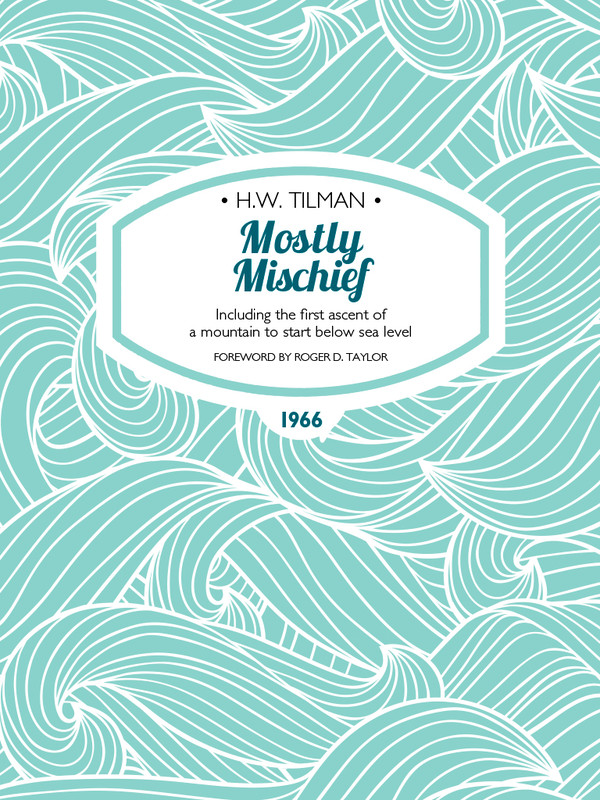
a mountain to start below sea level
a mountain to start below sea level

www.tilmanbooks.com
Foreword by Roger D. Taylor
Part One Bylot Island, Baffin Bay
Chapter 1 Plans and Preparations
Chapter 2 To Godthaab
Chapter 3 To Upernivik
Chapter 4 Baffin Bay
Chapter 5 Bylot Island
Chapter 6 Pond Inlet
Chapter 7 Homeward Bound
Part Two East Greenland
Chapter 8 The Objective and the Crew
Chapter 9 To the Faeroe Islands
Chapter 10 Surtsey and Reykjavik
Chapter 11 Angmagssalik
Chapter 12 Homeward Bound
Part Three Heard Island, Southern Ocean
Chapter 13 Fitting Out
Chapter 14 To Albany
Chapter 15 To Kerguelen
Chapter 16 Heard Island and Port aux Franais
Chapter 17 Port Jeanne dArc, Heard Island and Sydney
Part Four East Greenland, Return Engagement
Chapter 18 To Iceland
Chapter 19 Reykjavik and Angmagssalik
Chapter 20 Skjoldungen and Homewards
Afterword Tilman and Patanela, Outward Bound, 1964 Philip Temple
Maps and photographs
H.W. Tilman The Collected Edition
Still, I think the immense act has something about it human and excusable; and when I endeavour to analyse the reason of this feeling I find it to lie, not in the fact that the thing was big or bold or successful, but in the fact that the thing was perfectly useless to everybody, including the person who did it.
G.K. Chesterton
Roger D. Taylor
Ive just finished reading H.W. Tilmans eight sailing and mountaineering books for I dont know maybe the twentieth time. Reading Tilman is a continuous work-in-progress, rather like painting the Forth Bridge. Finish the last page and youre just about ready to start all over again. Throw in too the seven pure mountaineering books and you have several life-times worth of undiminished reading pleasure. Tilmans books are the nearest I get to having a permanent bedside companion. Theyre never far away. Sometimes I read them cover to cover, other times I browse and dip. Tilman is endlessly fascinating, and infuriating too. His adventures serve as both inspiration and warning. He is a guiding light and a hero, yet riddled with flaws and contradictions.
Lets be more specific. Tilman came to sailing latein his mid-fiftiesand it shows. Although he became a good ocean navigator, taking his pilot cutters through dangerous and difficult waters, he didnt, I suspect, ever achieve the fluency and sureness in close-quarter boat handling that only a lifetime of sailing can develop. For sure he was sailing unhandy boats, often with novice crews, but over the years he produced a litany of bumps, scrapes and near misses at moorings and jetties from Angmagssalik to Punta Arenas. To his credit he is brutally honest about this and the first to lampoon his own errors.
The more I read Tilman, the more I am convinced that his attitude to the proximity of land was not as well-honed or cautious as it should have been. His boats were neither the quickest nor the most close-winded, nor were their engines particularly reliable, yet time and again he stands in close, often, it seems, just for the hell of it. He talks of the Arctic Pilots warning of the race off Langanes in north-east Iceland, then sails past it a quarter of a mile off. Time and again he takes short cuts through dodgy passages. Going aground is a regular pastime.
In one sense much of this was inevitable. Tilman was not just going sailing. He was going sailing in order to go climbing, therefore he had to get in close and find suitable anchorages from which the climbers could strike out. The sailing was only ever a means to an end. Nevertheless, the safety of the ship was still paramount and on that score he had some significant lapses.
The grounding that eventually led to the loss of his first pilot cutter, his beloved Mischief, was the result of curiously inattentive seamanship. Becalmed at night, in fog, off the southern tip of Jan Mayen, where he already knew there were off-lying rocks and a strong northerly set, he turned in and left the deck to a complete novice, with no instructions. Fifteen or twenty minutes motoring due east would probably have been enough to take Mischief out of potential danger.
His next pilot cutter, Sea Breeze, was lost on the East Greenland coast when a combination of engine failure and lack of wind put the boat completely at the mercy of ice floes, which pushed her onto a rocky islet. The crew was lucky to be able to scramble onto a nearby ledge. Had Sea Breeze been equipped with a pair of sweeps, as was his next cutter, the loss may have been averted. Given that Tilmans northern voyages were largely aimed at penetrating ice fields in order to reach remote anchorages, and given the general unreliability of his engines, and his awareness that to be without any motive power when amongst ice floes was extremely dangerous, it is again curious that it took him so long to equip himself with sweeps.
Tilmans third and final pilot cutter, Baroque, survived, but only just. Whilst off north-east Spitsbergen he sailed her almost inadvertently between two islands, grounding her firmly on the interconnecting reef, a lapse he put down to tiredness. Only heroic and seamanlike actionthe throwing overboard of tons of pig-iron ballast, followed by nail-biting fun-and-games laying out anchors and trying to winch her offsaved her. Tilman and his crew re-ballasted her with rocks from a remote beach and successfully sailed her back home. Poor old Baroque had to go through the mill once again. Leaving harbour in East Greenland, and wrongly assuming that the steep shore meant he could go in close, Tilman again ran her aground, on the ebb. Despite masthead lines to the shore she dried out the wrong way and subsequently filled on the incoming tide. He was lucky that help was at hand to pump her out and refloat her, and to fix the engine.
Tilman was always ready with an apposite quote and one of his favourites was from the Prussian General von Moltke: Few plans can withstand contact with the enemy. I often think he may have done well to paraphrase it: Few boats can withstand contact with land.
Tilmans uncompromising ambitions locked him into a kind of vicious circle. The ultimate aim of his voyages was to climb. However his boat had to be looked after while the climbers were away. He therefore needed a biggish crew and a boat large enough to carry them and their equipment and stores. Although a man of some meanshis father had been a wealthy Liverpool sugar merchanthe was frugal by nature, and solved the boat problem by using Bristol Channel pilot cutters, craft well past their useful life and relatively cheap to buy.
He was therefore in a position where he was constantly scouring docksides for crew who, once found and shipped aboard, were often unhappy with the spartan conditions and the constant pumping that attended all his voyages. Occasionally his famously terse adverts in The Times, typically offering no pay, no prospects, not much pleasure, yielded some gems, but most of his voyages were beset by crew problems of one sort or another, some verging on the mutinous. The result of all this was that much of his time and energy at sea was taken up with a monumental struggle to keep his craft afloat and his crew on board. As Tilman often lamented, with the right crewand he did from time to time hit on an excellent combinationanything was possible, but an unwilling crew usually led to an unsuccessful voyage. He did not exclude himself from blame on this point. As an ex-soldier he was well aware of the military maxim that there are no bad armies, only bad officers.
Next pageFont size:
Interval:
Bookmark:
Similar books «Mostly Mischief»
Look at similar books to Mostly Mischief. We have selected literature similar in name and meaning in the hope of providing readers with more options to find new, interesting, not yet read works.
Discussion, reviews of the book Mostly Mischief and just readers' own opinions. Leave your comments, write what you think about the work, its meaning or the main characters. Specify what exactly you liked and what you didn't like, and why you think so.


